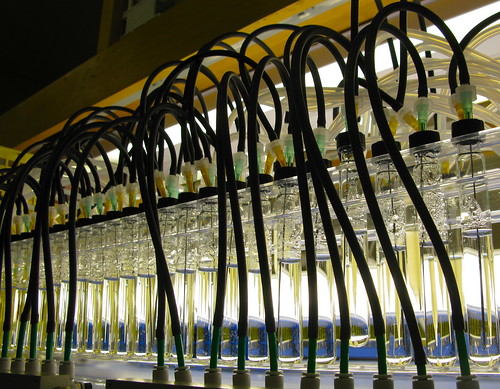 I used to work in the publishing industry, and while it was a super awesome place to work (as my homeboy Thomas Jefferson once said "I cannot live without books"), I was always bummed by the amount of waste we created every day. For example, we would have a pdf file of a first draft of a manuscript, and instead of e-mailing that pdf file around, my boss would have me print out a separate copy for each person who needed it (single sides, anywhere in between 100 and 300 pages).
I used to work in the publishing industry, and while it was a super awesome place to work (as my homeboy Thomas Jefferson once said "I cannot live without books"), I was always bummed by the amount of waste we created every day. For example, we would have a pdf file of a first draft of a manuscript, and instead of e-mailing that pdf file around, my boss would have me print out a separate copy for each person who needed it (single sides, anywhere in between 100 and 300 pages).Even worse, we didn't even have accessible recycling bins. There was literally one recycling bin on each floor, and people were too busy to go to it. They would just dump piles and piles of paper in the trash every day. And this was only for the first draft - same thing would happen with successive drafts, with the promo copies, and with the preview copies we sent for around for PR. And all of this before the printing of the actual book!
There are some "good" reasons for why we had to print all these copies out instead of sending pdf files. My generation is the first generation to really get used to spending more than 30 minutes reading on a screen, and even we are still slightly uncomfortable with it. My guess is that it won't be until the next generation that people are completely committed to online or electronic books. All of the higher ups, even in the publishing industry, just can't handle reading an entire manuscript on their screen.
A perfect example of this is the Amazon Kindle. Here is this amazing device, the same size as a book, where you can buy "books" for cheaper than in their paper versions and where you can carry 50 or so "books" around at the same time and in the same amount of space as a single book would usually take. People should be buying these by the truckload! And while Kindle sales are taking off, they are doing so very slowly and mostly with the younger generation. But I digress.
The fact of the matter is that people who grew up reading physical books still like reading physical books. They are uncomfortable reading them on a computer screen. The end result of this is that the publishing industry routinely cuts down 30 MILLION trees to make into the books that we buy each year.
There is some good news though: The Book Industry Environmental Council said today that it has set goals of cutting the U.S. book industry's greenhouse gas emissions 20 percent by 2020 -- and slashing them 80 percent by 2050.
While my problem with the publishing industry has more to do with the physical waste of paper than with overall CO2 emissions, cutting down on CO2 will also mean cutting down on paper waste. According to ClimateBiz.com, "the production, acquisition and use of paper are responsible for 65 percent of the U.S. book industry's carbon footprint. Increasing the use of recycled paper, ramping up the efficient use of all paper products, reducing returns and diverting books from landfills are among the steps that companies can take to reach the emissions goals."
It may not be perfect, but until we help out by doing all our reading electronically (something I admit I do not do, I LOVE my dog-eared paper books) it is a huge step in the right direction.









